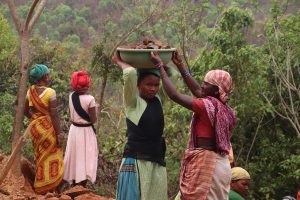[Readmelater]
Diversion Of Forests Hits Adivasi Women The Hardest. Here Is Why
In 15 of the 86 constituencies where the general elections will be held tomorrow, more than 30% of voters are impacted by the Forest Rights Act. We look at how the loss of forests impacts the lives and livelihoods of Adivasi women

Sahabai, an Adivasi woman, weaving a broom with the dried grass she collected from the forest / Shreya Raman
Support BehanBox
We believe everyone deserves equal access to accurate news. Support from our readers enables us to keep our journalism open and free for everyone, all over the world.










